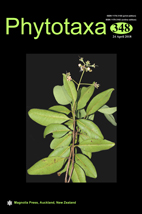Abstract
The hyphae of Basidiomycota and Ascomycota are divided into compartments by the cross-walls (septa). In mushroom-forming fungi, members of subphylla Pezizomycotina O.E. Erikss. & Winka (Ascomycota) and Agaricomycotina Doweld (Basidiomycota), the septa are associated with specific intracellular structures, which play a role in maintaining the integrity of hyphae in case of injury but also in cell differentiation (Webster & Weber 2007, Moore et al. 2011). In basidiomycetes, these structures may also be involved in certain intracellular processes and the formation of sporocarps (Van Peer et al. 2010, Moore et al. 2011). In this fungal group they are the reticulum-connected and -derived membranous structures called septal pore caps (SPC) or parenthesomes, associated with a dolipore (Moore 1985, 1996, van Driel 2007). The pores may also be occluded by a range of materials of different form. The septal-pore-associated structures may differ considerably between species of different evolutionary lineages. This quality was used as a differentiating factor in the taxonomy at both species and higher-order levels (Lutzoni et al. 2004, McLaughlin et al. 2009).

